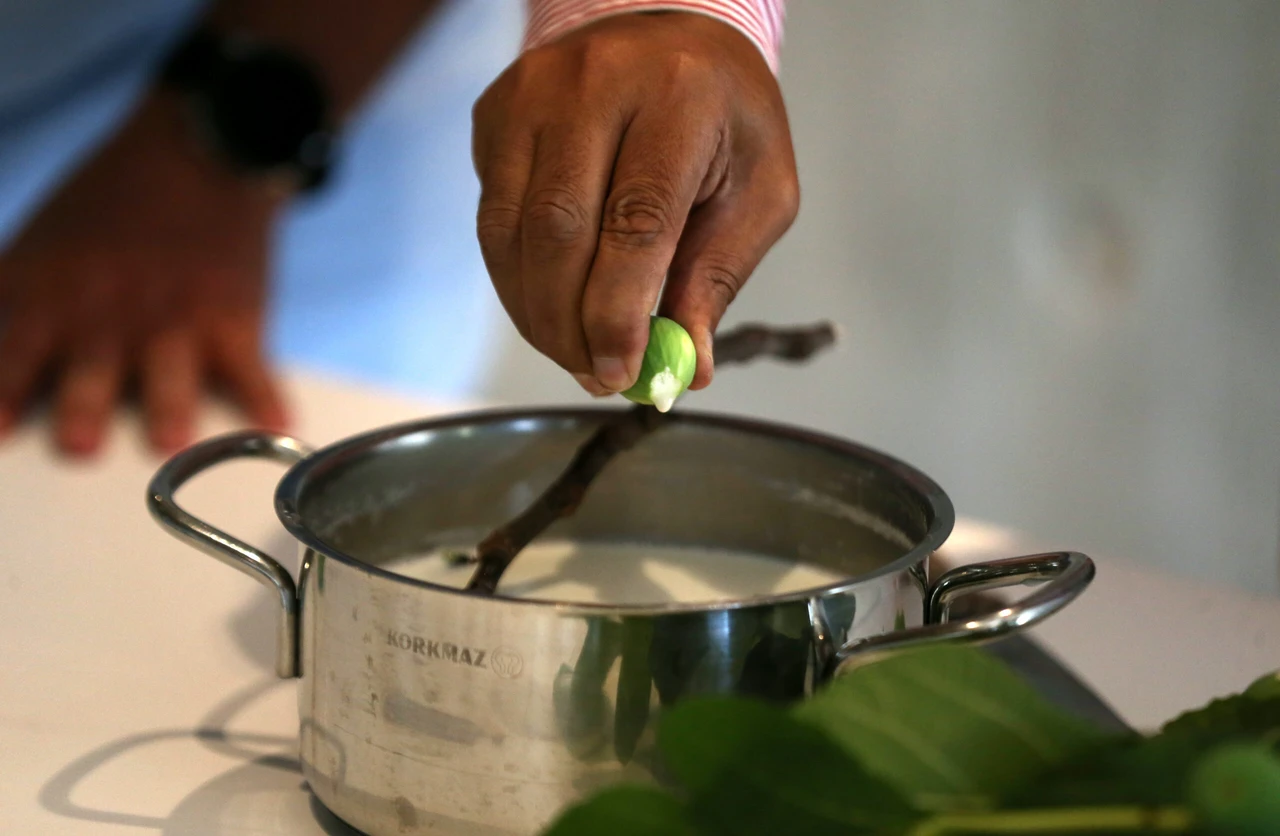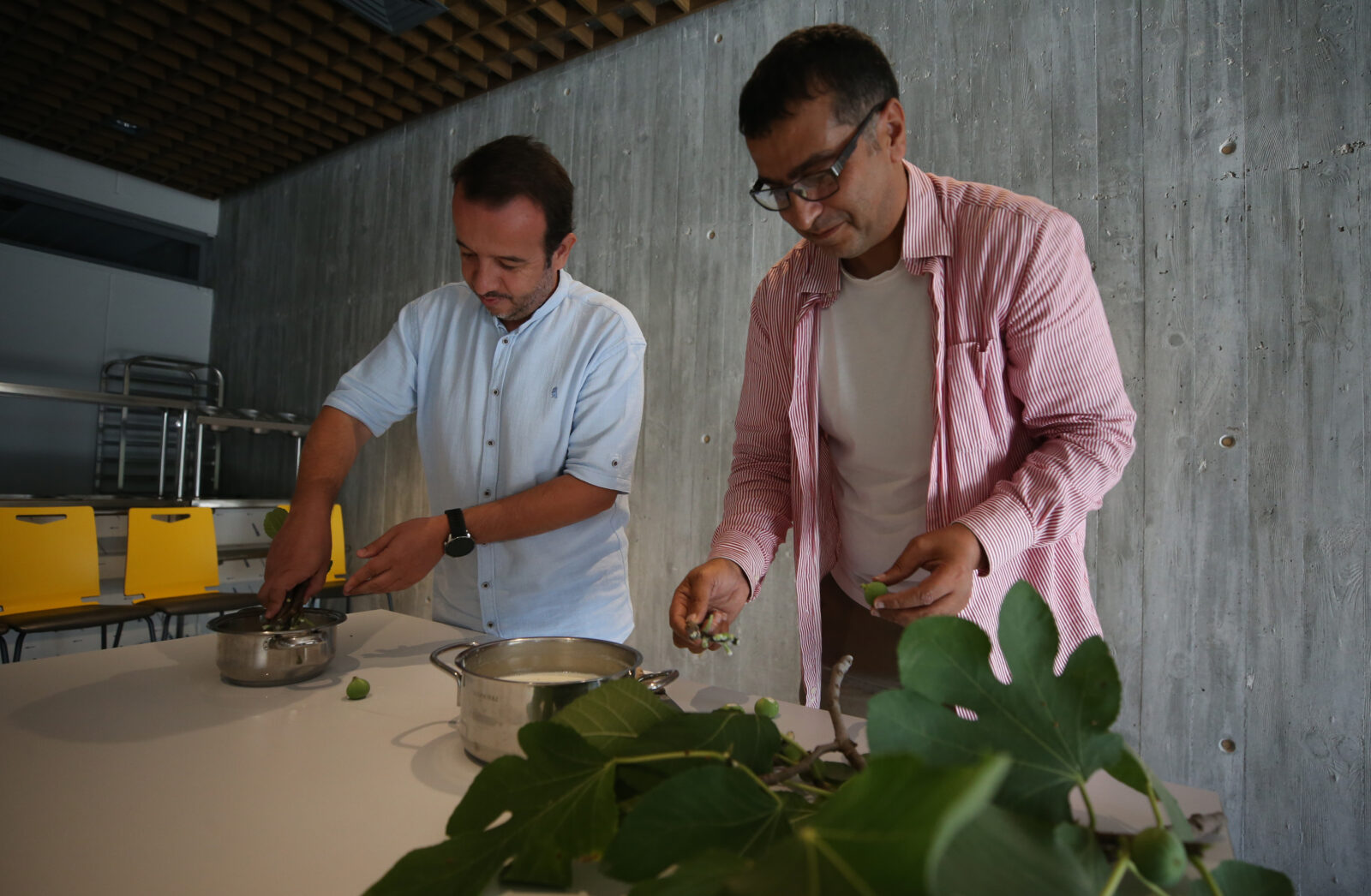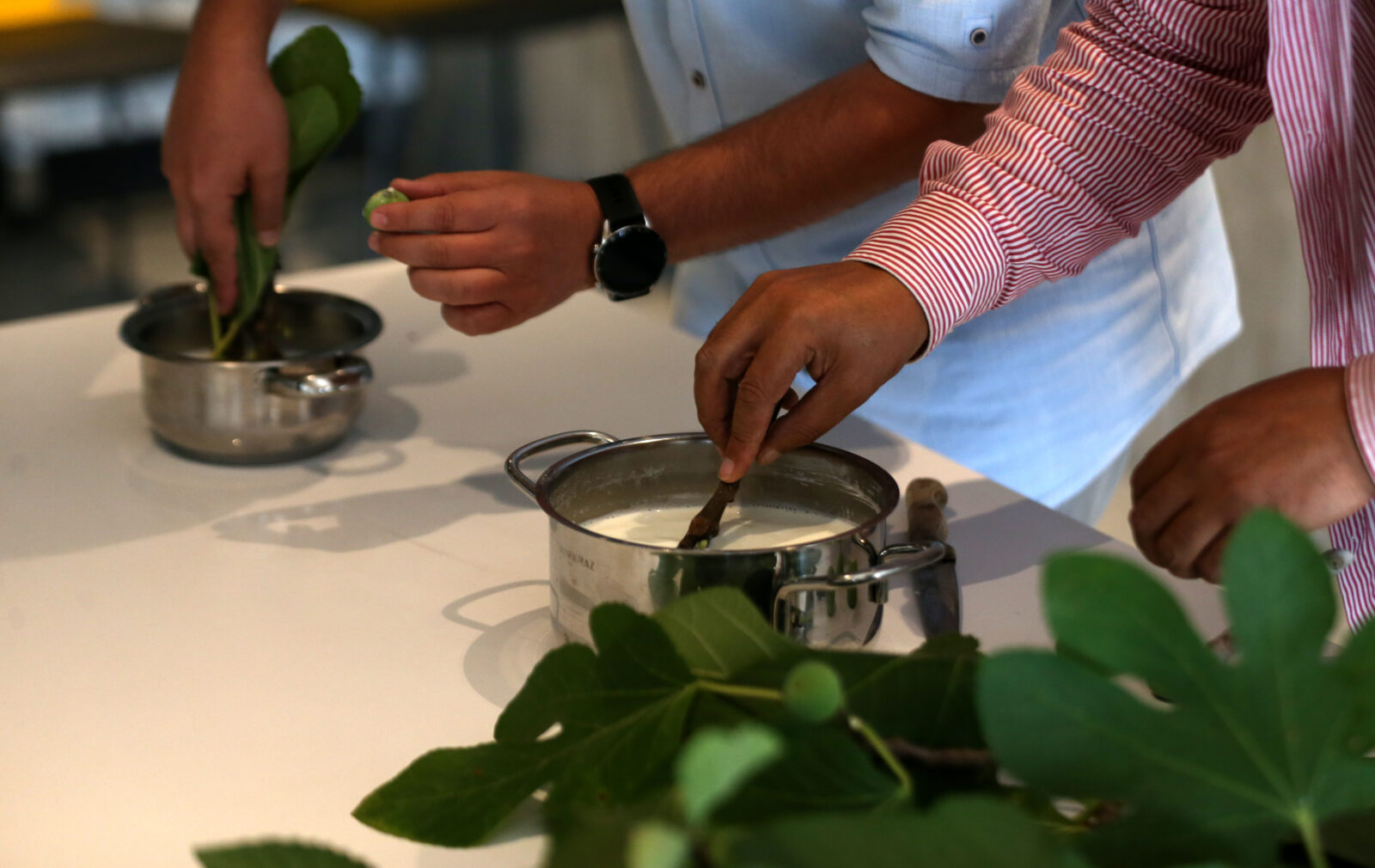Homer’s ‘Iliad’ reveals 2,750-year-old Anatolian delicacy ‘teleme’
 Troy Museum Director Ridvan Golcuk, making a teleme, Canakkale, Türkiye, August 28, 2024 (AA Photo)
Troy Museum Director Ridvan Golcuk, making a teleme, Canakkale, Türkiye, August 28, 2024 (AA Photo)
In a surprising culinary discovery, researchers have stumbled upon a 2,750-year-old recipe for a traditional Anatolian delicacy known as “teleme” in Homer’s epic, “Iliad”.
This ancient technique, still used today by the nomadic Yoruk (Old Turks) communities in Türkiye, involves curdling goat’s milk with fig sap, creating a yogurt-like product in just five minutes – a process that seems almost magical.

Teleme or cobanasi: Unveiling ancient recipe
During a recent press briefing at the Troy Museum, director Ridvan Golcuk revealed the fascinating journey that led to this discovery. While researching gastronomic elements within Homer’s “Iliad”, the team unexpectedly uncovered a passage that hinted at the method of making teleme, also known as “cobanasi” (shepherd’s dish) in some regions. The discovery was as thrilling as it was unexpected.
“In ‘The Iliad’, Homer describes the swift healing of the war god Ares by comparing it to how quickly milk curdles when fig sap is added. This intrigued us,” Golcuk shared.
“We wondered if fig sap could truly ferment milk so rapidly, and after some research, we found that this technique is still in use among the Yoruk communities in regions like Adana, Hatay, and Mersin.”

Recipe lost in time
What they uncovered was astonishing: the fig sap, or latex, when added to fresh goat’s milk, causes it to curdle within minutes, producing teleme – a dish structurally similar to yogurt but with a unique texture and taste. This process has been passed down through generations, surviving millennia without losing its essence.
Golcuk emphasized the importance of this finding, stating, “The fact that Homer’s description matches the process used in Anatolia today shows the deep-rooted connection between ‘The Iliad’ and this region. It’s remarkable that the knowledge of fig sap’s curdling properties has persisted for nearly 3,000 years.”

Troy’s goats: Guardians of culinary legacy
The region’s historical connection to goat farming further solidifies this link. Excavations in the area, particularly in Troy and Gokceada, have revealed that over half of the animal remains from the Troy-1 settlement belong to goats, with Gokceada showing even higher percentages. This suggests that the region’s inhabitants were well-versed in goat husbandry, making it plausible that teleme production has ancient roots in this area.
“Perhaps Canakkale is one of the first places in Anatolia where teleme was made,” Golcuk speculated. “Our goal now is to reintroduce this ancient recipe into modern Anatolian cuisine. The way fig sap transforms milk in just five minutes truly feels like magic.”
As the Troy Museum team continues to explore and promote this ancient culinary treasure, the rediscovery of teleme not only enriches Türkiye’s gastronomic heritage but also deepens our understanding of the enduring legacy of Homer’s “Iliad” in the region.



